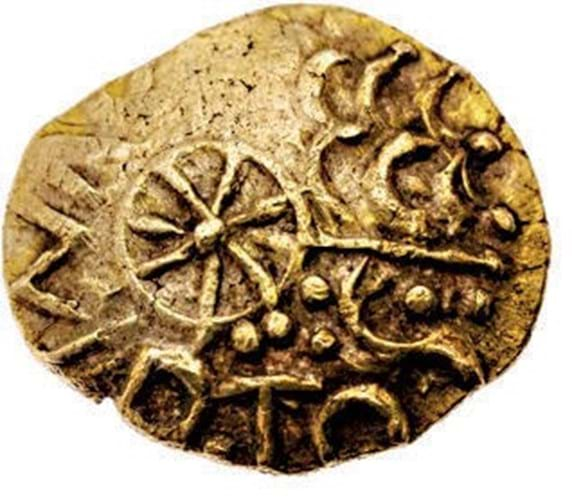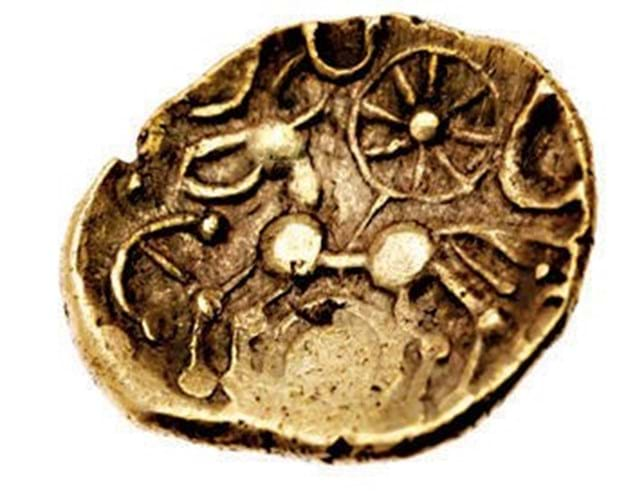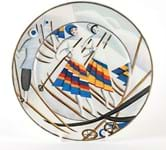
Gold quarter stater carrying letters from the name Esunertos, estimate £4000-6000 at Spink (for detail purposes, shown many times its actual size of about 13mm).
Found with a metal detector in March, the tiny gold quarter stater carrying letters from the name Esunertos comes for sale at Spink in London as part of its Official Coinex Sale on September 28.
The discovery of the coin plugs a gap in the numismatic and the historical record. The Latin name Esunertos, meaning ‘Mighty as [the god] Esos’, has been pieced together using two other coins from different dies found in the same locality in recent years and recorded by the Portable Antiquities Scheme.
The proximity to the famous Iron Age hillfort of Danebury suggests this may have been Esunertos’ centre of power.
Celtic interest
John Sills at the Ashmolean Museum is among those to hail the discovery that is expected to bring £4000-6000.
He said: “The recognition of three coins of Esunertos, a hitherto unknown Iron Age ruler, is one of the outstanding discoveries of recent decades in Celtic numismatics.”

Gold quarter stater carrying letters from the name Esunertos, estimate £4000-6000 at Spink.
Precise dating is not possible but the coin was struck at the very beginning of written language in the British Isles. It was struck sometime between 50 and 30 BC, shortly after Julius Caesar’s first Roman raid of Britain but almost a century before the Roman conquest under Claudius in 43AD.
At the time Belgae tribal elites and warlords who had fled northern Gaul were in the process of settling in pockets of central and southern England.
One theory is that the forgotten Esunertos was a rival to Commios, king of the Atrebates, who operated as Caesar’s ‘loyal client’ in England in return for his independence.
Iron Age coin specialist Gregory Edmund at Spink (whose university dissertation on the Roman invasion of Britain was written through the lens of Britain’s first coinage) led the team recording the new find.
“This is the reason I come to work”, he said. “This fabulous piece of prehistoric artwork completes the mental image we have when we think of Iron Age Britain – the war horse and chariot.
“But it also surprises us with the appearance of classical languages like Latin.
“Whoever he was, Esunertos was determined that everyone should know his name, and in that he succeeded.”
The series of auctions surrounding the annual Coinex fair is previewed this week.














